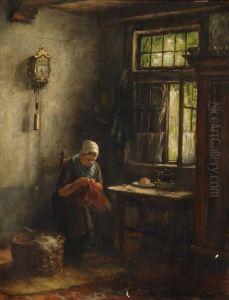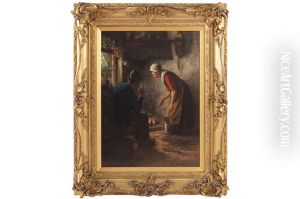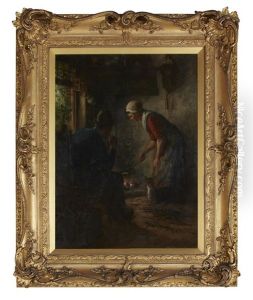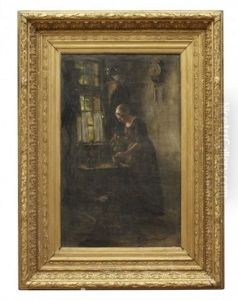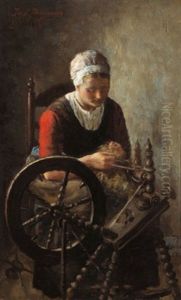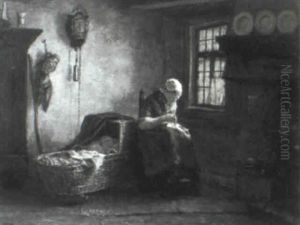Jacobus Franciscus Brugman Paintings
Jacobus Franciscus (Co) Brugman was a Dutch visual artist known for his diverse works that spanned various mediums including painting, drawing, and printmaking. Born on February 24, 1928, in The Hague, Netherlands, Brugman developed an interest in art at a young age, influenced by the rich cultural heritage of his homeland. Throughout his career, he explored different styles and techniques, though he is perhaps best known for his contributions to the Dutch figurative art movement of the mid-20th century.
Brugman's artistic journey was marked by a relentless pursuit of innovation and experimentation. He studied at the Royal Academy of Art in The Hague, where he honed his skills and developed a unique artistic voice. Early in his career, Brugman's work was characterized by a strong emphasis on the human figure, often depicted in abstracted forms that hinted at the emotional and psychological depths beneath the surface.
Throughout the 1950s and 1960s, Brugman's style evolved as he began to incorporate more abstract elements into his work. This period saw him experimenting with color, form, and composition, pushing the boundaries of traditional figurative art. Despite the abstract tendencies in his later work, Brugman never completely abandoned the human figure, which remained a central theme in his oeuvre.
Brugman's contributions to the art world were recognized with several awards and exhibitions throughout his career. His work was exhibited in numerous solo and group exhibitions, both in the Netherlands and internationally, allowing him to establish a reputation beyond his native country. He was also a member of various artists' groups, which played a crucial role in the development of Dutch modern art during the post-war period.
Jacobus Franciscus Brugman's legacy is that of an artist who was constantly evolving, never content to settle into a single style or mode of expression. He passed away on October 14, 1996, leaving behind a body of work that continues to inspire and intrigue art lovers and scholars alike. Through his paintings, drawings, and prints, Brugman communicated a deep and nuanced understanding of the human condition, making him a significant figure in the history of Dutch art.
